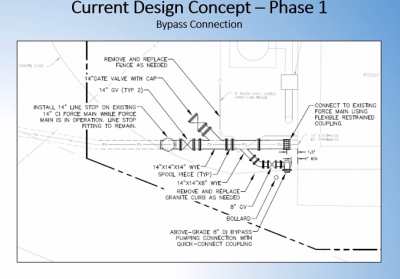Marion looks to make pumping station improvements by June
MARION – The Department of Public works will look to quickly make improvements to the Front Street pumping station, to take advantage of grant funding that expires at the end of the fiscal year.
The town received a grant from the Massachusetts Office of Coastal Zone Management that will cover 75 percent of the total project costs for phase one of a pumping station improvement project on Front Street.
The pumping station was built in 1970, and had some updates in the early 2000s, according to Kent Nichols, who presented the project to the Select Board on Jan 18.
The town has been working with Weston and Sampson for the design work so far, and hopes to put the project out to bid in February, start construction in March, and be done by June.
A 2019 study of Marion’s pumping stations showed that they all had controls that were vulnerable to flooding, and engineering consultant CDM Smith recommended that four of the pumping stations eventually be replaced entirely.
The pumping stations at Creek Road and Front Street emerged as particularly important, not because they were the most at-risk for flooding, but because all of the town’s sewage has to pass through those two stations.
The Front Street force main, or main pipe that pumps all of the town’s sewage to Benson Brook to be treated, is of particular concern in the first phase of the Front Street project. This is because a preliminary analysis suggested that it has a finite life span, and because it does not have a bypass or backup system that could send sewage back to the station in the event that it fails.
“We do not expect that to happen,” Nichols said, about a complete failure of the pipe, “but it is a vulnerability.”
Phase one of the Front Street project would install a permanent bypass system, as well as an air valve, which would replace a non-functional air valve and allow for gasses to be vented from the force main before they damage the pipe.
Engineers would also be able to remove small segments of the force main during construction for further analysis, to get a better idea of its lifespan.
The town has mainly focused on phase one of the project so far, as it seemed like the most feasible amount of work to get done before funding runs out in June of this year. But phase two would look to flood-proof the building and repair some of its known deficiencies to minimize the impact of flooding.
Nichols said that the second part of the project “may be costly,” and would benefit from additional future flood projections before the town continues with planning work for it.














